Born and abandoned in Mumbai, reborn in Sweden, Erika Sandberg says she is Indian on the outside, but feels Swedish on the inside.
Rediff.com's Vaihayasi Pande Daniel narrates her tale.
Illustration: Dominic Xavier/Rediff.com

In August 1976, a Swissair jet flew out of the monsoon skies of Bombay, due west, with a precious little bundle onboard.
The Boeing was headed for Zurich. In Switzerland probably another air hostess took careful charge of this special delivery as she boarded a flight headed to Stockholm.
Waiting for her at Arlanda airport, likely torn between anxiety and hope, were Inga-Maja, 38, and Conny Sandberg, 39, from Mölnbo, a village about 55 km southwest of Stockholm; she a teacher, he, the owner of a small trucking business.
That day -- August 22 -- was Inga-Maja and Conny's first meeting with their Indian daughter, eight-month-old Sheetala who they had adopted.
They brought Sheetala home, along with her grey Swissair bag of meagre possessions, including the airline blanket. She ate just a little -- her stomach was upset -- and would not sleep in a bed, preferring the floor.
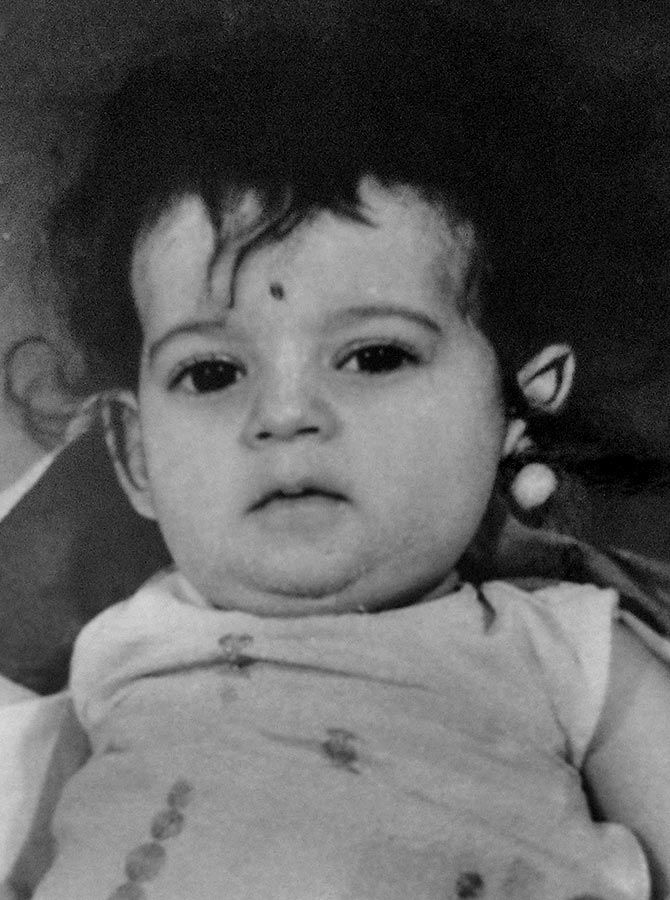
So Inga-Maja made a bed for her on the ground in front of the fireplace, in the living room, along with herself and their boxer, Babs. "It was summer. The dog and Mum were sleeping next to me. And my stomach was very upset. (But she said) I was very happy; I was a very contented child," says Sheetala.
So ended Sheetala's first day in Sweden.
Settling into Inga-Maja and Conny's warm, loving home was nearly effortless for the parentless tot who had only known the inside of a orphanage in Matunga, central Mumbai.
Sheetala, now Erika, grew to adulthood in the Sandbergs' white-brick, three-storied house, with a garden and apple trees, in an idyllic Swedish village, so distant from Matunga.
Mölnbo, not that far from Mälaren lake and the Baltic Sea, is surrounded by forests and meadows of flowers; a pretty place where daily rhythms are probably dictated by the seasons and nature.
Her father named her Erika "after someone he liked very much when he was young."
The little Swedish-Indian girl -- "Indian on the outside," as Erika refers to herself, with a laugh -- attended the local school and then the high school nearby.
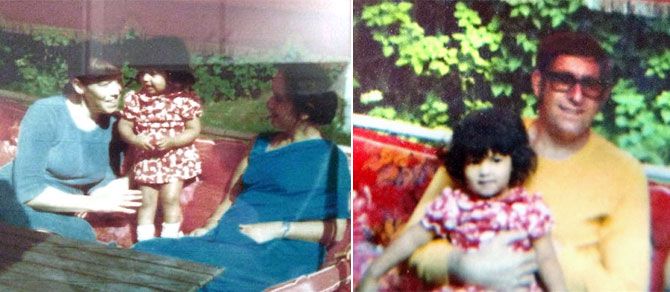
Right: With her dad Conny.
Erika says the Sandbergs were model parents who had nurtured scores of economically underprivileged children. "They were very amazing people." Photographs: Kind courtesy Swaran Ahuja.
Erika was brought up, she says, to be proud of being adopted and thanks to her parents rather secure in her identity, even if it was an atypical one.
She was also reared surrounded by a string of cousins, of nearly the same age, from her mom's side, with whom she remains very close, along with foster brother Sten.
Erika knew from the age of 9 that she was going to be a teacher. Her family was full of teachers, and she also had a favourite teacher in school, who influenced her. After graduation, before heading to university in Stockholm, at 18, which degree qualified her to teach grades one to seven, she began teaching formally at a school at Gnesta, close to Mölnbo and later in Stockholm, working mainly with immigrant children.
Erika moved abroad for various stints, between teaching. To Australia. To Egypt and Jordan to further understand Arabic culture.
She helped make a documentary on El Qoseir, a fishing village on the Red Sea, near the touristy Hugada, in Egypt. In Amman, Jordan, she worked with disabled Palestinian refugee children.
In between trips to Australia, the Middle East and working in Gnesta, Erika made that first memorable 'return' trip to India, like many other children adopted in the West.
Inga-Maja wanted her daughter to have a chance to track her roots and culture.
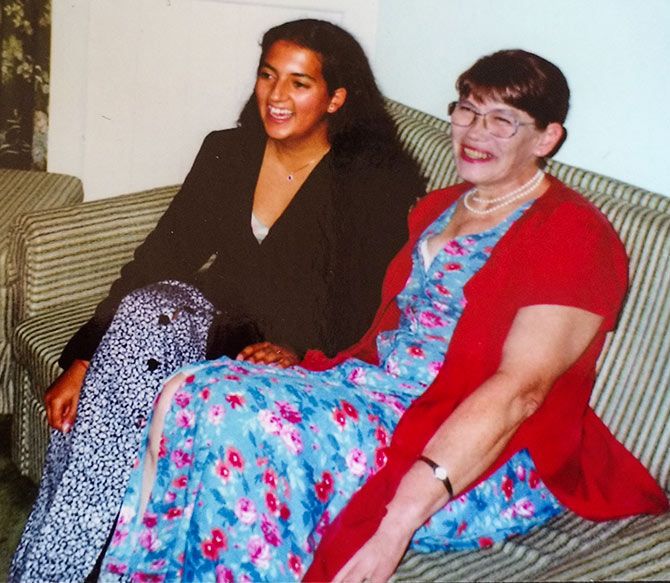
The journey back to her birth country -- retracing her voyage 19 years earlier -- was planned in 1994, when Adoptions Centrum, the local agency through whom Erika was brought to the Sandbergs, organised a trip for Swedish parents to take their adopted children to India and see the orphanages they came from.
Recalls Erika, "The choice that we go to India I think was my mother's. She had a stronger urge to go to India than I did at that time... She was very moved, in tears, when she came there. She had always wanted to go to India... She always had this dream about visiting. Always wanted to see the country where I was born."
Erika was less keen. "For me it sort of grew. But when I was 18, I (opted) to go to Australia."
What did she know about India before she came to her birth country?
"I knew very little. I was curious. In (class) nine, I wrote an essay about (India being) the Jewel in the Crown. And I wrote about Mahatma Gandhi."
Erika, then 19, though not entirely excited to go to India, was nevertheless mildly curious in penciling in the details of her birth, which had always been strangely threadbare.
Like all she knew was that she had been born January 2, 1976, in a Bombay hospital and handed into a nearby orphanage when she was two days old.
Like she believed her name Sheetala came from the hospital although she was not certain how the hospital got that name. Did the nurses name her?
Like she never got to know why she was, quite unusually, delivered to Sweden by an airline and a kindly hostess. "Ya, can you believe that!" Which airline stewardess would take charge of an infant these days and take her across the world?
Or the most essential questions of all: Who were her parents? Why could they not bring her up? Why did they give her away?
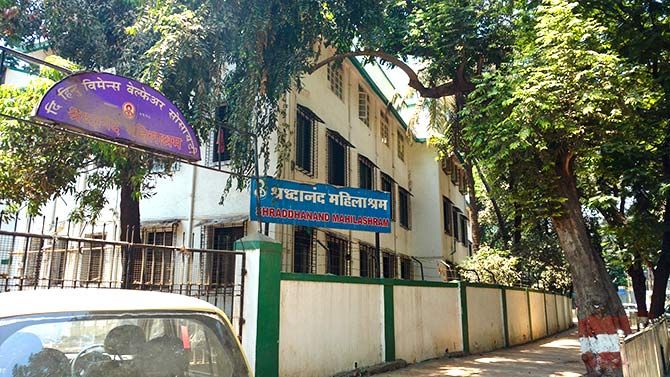
In December 1994, Erika and Inga-Maja set out for India, to Tamil Nadu and Kerala, and to that austere white building in Matunga, central Mumbai, to unravel a life story.
But the day Erika went back to the orphanage, Shraddhanand Mahilashram, where she spent a better part of the first year of her life, from January to August, it was a day of disappointment.
When they arrived at the orphanage remembers Erika, "My mother was very moved and started to cry... I was not moved in any way."
The orphanage authorities flatly told her and her mother that they could not offer her any information on her real mother. Those facts were confidential, even to the blood child of the mother who delivered her.
"I hadn't really given it much thought, but since I was there I thought I might as well ask them (if) there is any chance I can find out about my biological parents. They said no because (in India parents) can hand in a child and (remain) anonymous."
"They just said I was born in a hospital and handed from the hospital to the orphanage when I was two days old."
"With that answer I just closed the case. I just said okay I am not going to be able to ever find out... My mother, she was a bit curious about wanting to find out. But then when they told us it wasn't possible, we thought okay it is not possible."
Erika went away with the poignant realisation that she would have to live forever with the niggling question marks surrounding her origins.
But what also came home to her, plainly, was the touching understanding that in some ways she was considerably more blessed.
Even if she lacked the knowledge and love of a birth mother, Erika had more than her share from her adoptive Swedish mother as well as her Indian godmother.
Indeed it was Swaran Ahuja, her godmother, who she credits with having filled the first few months of her Indian life with joy and affection at the orphanage, ensuring she was not an institutionalised child.
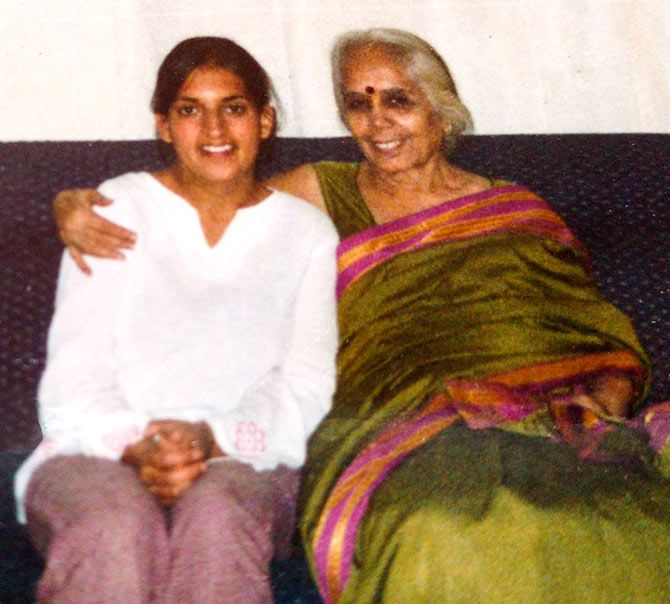
A friend of one of the volunteers at the Matunga home, Swaran, who taught blind children and trained teachers for the blind, was entrusted with the task of looking in on Erika and two other babies, while that volunteer was away.
"She filled in for her. We were all (later) sent to Europe. She came to Matunga every week to see me and play with me. You hear about these orphanages where the children can't meet your eye..."
"One of the reasons why I was a very social child when I (arrived) in Sweden was maybe because she (came) once a week to (the orphanage) see me and do the things you do with little babies. Hold them in your lap. Talk to them. Interact with them." Swaran would come regularly to Shraddhanand to play with Erika.
Recalls Swaran, "My first reaction (when I saw her when she was a few months old) was: 'Such a sweet baby! Pretty. Very sweet altogether. A happy baby, an adorable little baby.' I almost wanted to adopt her myself. Wanted to bring her home and look after her. But she went to Sweden."
No one knew the origins of the little babies in the ashram, except that there were mostly given up to Shraddhanand by their mothers and not simply left anonymously at the door.
Says Swaran emphatically, "Must be some compulsion. No mother likes to give up her child, even the poorest of the mothers."
Swaran missed the chance to send Erika off at Mumbai airport when she left for Sweden that August as a baby.
So she popped by to see Erika in Mölnbo in the year after she was adopted -- "We got on very very well even then; she was fond of me and so was I."
And Swaran went again, later when Erika was 15, cementing a relationship that has spanned oceans and the years.
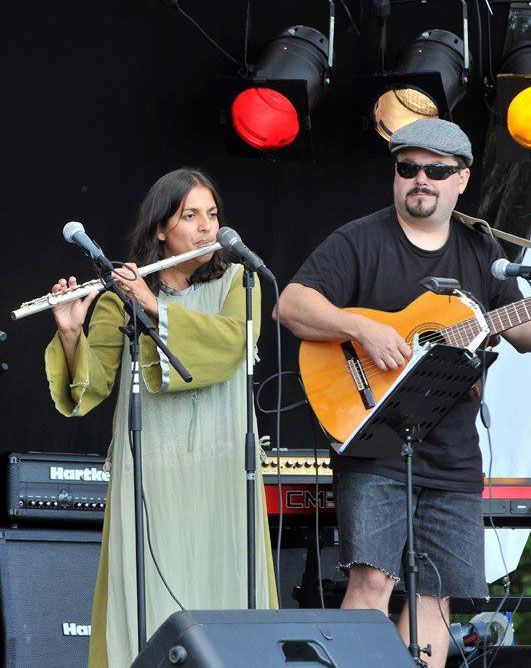
Erika is 41. She was in Bombay very recently, on her ninth trip to India, along with her half-Indian son Shante, now 7, and partner Anders. They had a holiday in Goa that left them all quite tanned.
Each time this unusual Swedish-Indian family arrives in India, they travel to a new destination -- Kerala, Goa, Agra, Delhi. They meet the Ahuja family and friends, slowly expanding their Indian social network.
They bask in the warm sun, which is good for Erika's multiple sclerosis, which she was diagnosed with while working with disabled Palestinian refugee children in Jordan, and savour lots of Indian dishes, especially seafood.
"We love the climate, of course. Coming to a sunny warm place in January, February is fantastic; that I love, of course. And the food. All Indian food. Everything we have here is fantastic... The most difficult thing for me to accept is the noise."
Swaran is one of the reason Erika returns with a certain frequency to the city of her birth. Her growing attachment to India "I think is all due to Swaran. If I hadn't had my godmother here I don't know if I would have had a strong connection."
"I feel more and more for India... Coming here I feel more and more connected with the city. Most of the things (here) appeal, of course. The first thing is meeting Swaran. It is like meeting family. That's what I enjoy most. Being with her. Getting all the knowledge from her."
"She is such an interesting lady -- 84 years old, fit and healthy, travels all over India... She flew today to a conference about Braille, close to the border of Bangladesh. Her life work has been to educate teachers to teach blind children, because her husband became blind in his 20s... They both devoted their whole lives to building up the blind system for blind children in India and she is still doing that..."
"I have been attached to India through her. Otherwise I would be like any tourist."
On every trip she first spends time with Swaran at her sprawling home overlooking the Oval near Churchgate, south Mumbai. One of the bedrooms in the home almost has her 'name' on it. Erika and Swaran's daughter Rati share a close relationship as do their children.
Another reason to keep coming is for her son.
"Shante is half Indian. He looks like me; he looks Indian, sort of, a little bit. I wanted him to have a stronger connection to India than I had... When I was growing up India was just a strange place, far away. I had no special connection to India. Shante has come here six times. He has a strong connection... He says he is half Indian... I am happy I can give him that. It is a gift."
"They say when a child is born he has 100 hundred languages and then you deprive him of 99 and you give him only one. I don't want to deprive him of his Indian heritage. I want to give him that."
"He is a very, very curious boy... The other day he asked me who my real parents were. I explained it to him, just like my parents explained it to me, that your real parents are the parents who look after you... Then you have a biological mother and you were in her tummy and came out of her body and all that. The real mother is the one who took care of you..."
"He was happy with that answer. He thought it was strange that I didn't know the person whose belly I was in (laughs)!"
On her Facebook account she describes herself as from Mumbai, India. Does she consider herself a Mumbaikar? "I don't know... I have never spoken about myself as an Indian person. I feel so Swedish on the inside. But, of course, people when they see me, realise I come from India. They start asking questions about India."
"Do I speak Indian languages? Do I speak Hindi? I feel like, no, no, I know so little, I know more Arabic. More in contact with Arabic countries, spent more time there, than in India. I feel more global, than anything."
Erika and her mother did keep in touch with the Shraddhanand Mahilashram over the years. She took her son Shante there so he could see where his mother lived after she was born.
On subsequent trips Erika recalls being more moved to see the ashram, much more than she was the first time she came back.
"When we went there with my son it struck me that I could have been one of the many children still there. It was very obvious the difference between our life here (Sweden) and theirs."
She even wanted to donate some of the proceeds from her mother's estate to the orphanage, she says, but was puzzled and perhaps mildly troubled when she didn't hear back from Shraddhanand Mahilashram and donated it elsewhere.
Do thoughts about her birth mother still linger? Or of her life if she had not been given up for adoption?
Erika considers your question for a few minutes, solemnly -- she is a very serious, soft-spoken and, it would seem, intense -- and she says with feeling, "I think a lot about that especially when I see women the same age as me..."
"Last time we went to Dharavi (a sprawling slum settlement in Mumbai). I was walking through and I saw this woman, who looked to be my age, sitting down cooking in this little poor kitchen. She had like five children of the same age running all around her."
"I thought to myself: 'Oh my god, that could have been me...' I felt very strongly for her... Just sad. Something happened inside me. I was very affected by seeing her. I didn't talk to her. I just passed her house..."
Her MS is another reason to remember her birth mother.
"I thought a lot about (that too) when I had MS. If that was the reason why my mother abandoned me. Maybe she had MS too, because it has a 15 per cent (chance of being) inherited from the mother. Maybe that's the reason she gave me away. I started thinking (along those lines and) about why she left me..."
"But then I have always had Swaran. I know that if I hadn't come to Sweden she would have adopted me. Me and Swaran were born on the same day."
Both she and Swaran feel that's why there is such an affinity between them.
"When I was at Bal Asha (an orphanage near Mahalaxmi station, south Mumbai) two weeks ago, I saw this baby. She was four months old. Oh my god, I just wanted to take her with me... I want to adopt all children I see in the orphanage here."
"My first thought is adopt, I want a child. Then my second thought is no, I shouldn't do that."
Her MS, she says, always holds her back. She doesn't want to take responsibility for another child, especially one that is not her own, in case she becomes disabled.
The illness she knows might change her future. It could leave her in a wheelchair, unless medical research slays it earlier.
Erika tries not to worry excessively about its future implications. She lives very much in the present for her son.
Instead of adopting an orphan, she settles for the social work she can do for them.
Will she continue to look for her mother? Do the loose ends still ache?
"I don't know. I won't say no. I keep that door open... I believe a lot in faith. If things are supposed to happen, they happen. But I don't have to look for it so hard..."
How can you tell Erika's life story without a visit to the place where it began?

It would seem little has changed at the 90-year-old Shraddhanand Mahilashram, where Erika, then Sheetala, spent those initial eight months of 1976.
Tucked away on a quiet, shady street of Matunga, where many of the lanes around here are named after the ashram, the orphanage is as neat as a pin and very homey.
Sunlight trickles through the tall trees and dapples its silent white-washed walls. By Mumbai standards it is a haven amidst the boisterous urban sprawl, where surprisingly you actually hear birdsong above the din of the traffic.
The entrance shows off numerous awards the organisation has received. There are black and white pictures of dignitaries -- the late prime minister Indira Gandhi, former chief minister Manohar Joshi, the late President A P J Abdul Kalam -- who visited the orphange.
It is about noon when you visit, anonymously. A bunch of young women and girls wander about. A trim little garden out front has a swing where two teens are chatting.
The main difference between 1976 and today is the two enormous skyscrapers that peer beady-eyed into the orphanage courtyard.
A house-proud orphanage administrator tells you that today it houses 176 children. Only about 16 of them are boys. Boys can stay there till they are 6 and are then moved to another institution, if they are not adopted.
The patterns of adoption and how these children came to be at Shraddhanand have not altered vastly over the years.
Girls between 0 and 25 years were/are accepted in this Hindu trust-run ashram. Some were unwed, pregnant young women, though none are there today. Parents, often from well-off families, brought those girls here.
They spent probably the distressing months in the run up to their delivery sheltered in this peaceful, hushed orphanage. The girls typically delivered at the nearby Sion hospital, formally known as the Lokmanya Tilak Municipal Medical College and Hospital, "where no one asked many questions," says the superintendent. And went home without their babies, but the family reputation intact.
Their motherless babies grew up at the ashram, more fortunate, in some ways, than the destitute children who live an ugly life on the side of the dusty roads of the city.
Many of the Shraddhanand children were adopted by families abroad.
When the adopted children grew to adulthood, they often came back to find their mothers and fathers. Not many could. Nor did their mothers want to be found, possibly.
The process is all very clearly set out at Shraddhanand, the superintendent tells you. The orphanage has various legal provisions in place to protect the identity of the mother, which are as per the laws of the land, one is assured.
Most of these young women, who left their children here, chose not to look back.
Once they delivered they never returned and the orphanage does not have their current addresses.
An adopted child can only meet her real mother if her birth mother consents. And that doesn't happen for obvious logistical reasons.,
"And who names the orphans? The hospital?" I ask.
"No, we do."

The tale of Erika's origins does not have the unambiguous or over-simple ending that say the film Lion, about an adopted Australian boy, had.
In its open-endedness it is more true to the nature of life, where tidy, happy finales are infrequent. Her parents might very well be out there somewhere, in the city of Mumbai, even.
The closest you can get to understanding who Erika's mother was, is by standing in the middle of the courtyard of this serene, old-fashioned building, its walls cocooning its inmates from the stark reality beyond its doors.
You imagine she might have stayed here and was perchance a very young, distraught, woman who probably sought shelter here in the final months of her pregnancy.
She would not have looked forward to childbirth, because she knew her relationship with the unborn child kicking in her stomach would end the day it was born.
She could have also realised that her days in the ashram would be the closest time with that child she would never know. Because eventually the distance between herself and the child would be grow as far as eternity.
But Life takes no prisoners: When she walked away, karma took over.
One woman's loss was the gain of two women. Together they brought up and influenced a little girl whose circumstances made her a global citizen who today devotes her life to the disabled.
MORE features by Vaihayasi Pande Daniel in the RELATED LINKS BELOW...










